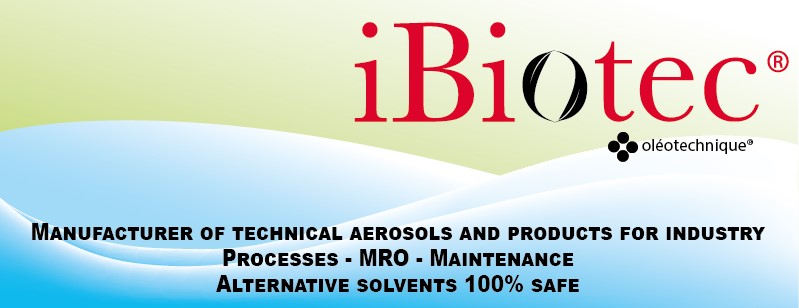
|
Jacques P. TARDIF Technical Department |
The hazards of biological degreasing fountains
There was a great deal of interest in the use of biological fountains since, in theory, they did not generate industrial waste.
However, biological fountains, which it would be better to refer to as "bacteriological fountains" since they are seeded with bacteria, do not eliminate all pollution; the presence of petrol, diesel, thinners and paints is prohibited, otherwise the micro-organisms will be destroyed or inhibited.
A mere power cut is the cause of foul odours.
In addition, because copper or its alloys (brass, bronze, nickel silver, zamak, etc.) are powerful bacteria reducers, any mechanical component containing this metal leads to the very rapid destabilisation and degradation of the baths.
Replacing the baths is prohibitively expensive, costing between €700 and €900, and sometimes it has to be done several times a year.
Regulatory aspects
The regulations on biological drinking fountains incur the liability of the users
The liability falls within the scope of ordinary law. The user is solely liable for the hazards associated with the use of the populations, genera and species of the micro-organisms supplied.
There are no adequate scientific studies on all the micro-organisms used.
Micro-organisms in the environment could contaminate the fountains.
The genera and species seeded when a biological fountain is put in place are not always the same and can change over time. Their proportion can also fluctuate with time.
Group 1 bacteria have been shown to evolve into group 2 strains of pathogenic and infectious risk
Pseudomonas aeroginosa
Achromobacter xylosoxidans
Bacillus cereus
Ochromobactrum intermedium
As well as group 3 risk
Bacillus antharcis
(by sequencing the DNA coding gene)
In addition, there is a risk that can be transmitted to users if they are immunodeficient.
Labour Law: Biological risk prevention
The deliberate use of bacteriological media is subject to occupational risk assessment. Labour law Art. R 4421 to R 4427-5
"It is clearly stated that it is up to users to carry out their own risk assessments and that users must have the following information at their disposal":
- The precise identity of the microbial strains used in the process.
- The potential pathogenicity of each biological agent.
- The infectious dose of each pathogen.
- The bacterial concentration reached in the process.
- The route of entry of the pathogen into the body (digestive, mucocutaneous, respiratory).
As it falls within their responsibility, do users also have the means to monitor developments and population changes over time, in relation to the original seedings?
Do they know the pathogenicity and infectious dose?
Although manufacturers claim that their end-use products contain only group 1 bacteria, the genera and species are rarely reported in the MSDSs or their data sheets.
Manufacturers and marketers of biological degreasing and degreasing fountains recommend the use of blow guns.
Blowing dries out the parts and prevents corrosion problems.
This technique results in respiratory exposure to bio-aerosols for workers.
The wearing of respiratory masks, in addition to traditional PPE, is mandatory in many countries.
SOURCES :
www.inrs.fr ND 2304 monitoring of the microbiological flora of grease biodegradation fountains
www.inrs.fr risk assessment of grease biodegradation fountains
"Journey to the land of bacteria" by Christine DAVID Microbiologist at the Expertise Department of the INRS.
www.irsst.qc.ca Safe use of biological degreasing fountains
www.irsst.qc.ca Report R-829 Prevention of chemical and biological risks
www.inrs.fr ED 6034 Biological risks in the workplace
www.inrs.fr TJ 24 Legal checklist
www.textlab.io Mesophilic aerobic degradation report by Mr Sachiya Iwashita
www.cancer-environnement.fr Biological risk in the workplace
Biological fountains were introduced in the USA in the 1990s (Wolf and Morris).
According to the SUMER survey, 2.6 million employees, or 15% (excluding health professionals), say they are concerned by biological risks in the workplace in France.
It is estimated that the current cost borne by the Regional Health Insurance Funds and General Social Security Funds is 3 billion euros each year for diseases of biological origin.
The Association Interprofessionnelle pour le Service Médical et Social (AISMT), which is run and coordinated by occupational physicians, who are therefore confronted with pathologies of biological origin, clearly indicates that the use of degreasing fountains in industry is affected by biological risk www.aismt36.com Risks and professions Biological risk in the industrial environment.

HAZARD
BIOLOGICAL RISK
REACH Regulation EEC 1927/2006 and CLP Regulation EEC 1272/1079
introduced many new pictograms and risk phrases
related to the use of chemical substances and preparations.
Should the same not apply to biological risks?
 |
 |

The biological risk must be controlled
THE TRANSMISSION CHAIN
INFECTIOUS AGENTS
![]()
TANK
![]()
EXIT DOOR
![]()
TRANSMISSION ROUTES
![]()
ENTRY DOOR
![]()
POTENTIAL HOST
![]()
YOU and THOSE AROUND YOU
Manufacturing, lubrification, cleansing, protection,
IBiotec® Tec Industries® Service
offers a wide range of products reserved for industrial area
If you wish for :
a free sample
a technical advice
a product data sheet
a safety data sheet
IBiotec® Tec Industries®Service
manufacturer of technical chemical products.
Welcome to our website.
